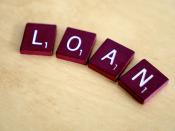When you look at the boom in the housing market, don't forget that what you're seeing is the second leg of financial deregulation.
That's comforting, in a way, because it says what's happening with household debt and house prices is part of a once-only adjustment in response to a change in the economy's structure.
But it's also discomforting because, if you remember, the first leg of financial deregulation in the 1980s ended up with wildly excessive borrowing for investment in commercial property.
Some big businesses fell over, some banks got wobbly and the whole sorry episode contributed mightily to the severity of the recession of the early '90s.
When the banks were deregulated in the mid-'80s, it touched off an orgy of lending to big business.
That was mainly because the regulated system had long kept the lid on lending.
With deregulation, the deal was that you could now borrow as much as you liked - provided you could afford to pay the (now higher) market interest rate.
But note this: there wasn't a lot of extra lending to households.
That was because, with inflation averaging 8 per cent a year, nominal mortgage interest rates where still very high.
But it was also because the banks thought that, in the brave new deregulated world, lending for housing was for wimps.
So they fell over themselves to lend to "entrepreneurs" such as Alan Bond, Christopher Skase and Robert Holmes a Court and big business generally.
They lent heavily for company takeovers until the stockmarket crash of October 1987, when the game moved on to lending for city office blocks and other commercial property development.
The business sector became very highly "geared" - it had a high ratio of borrowed capital (debt) to owners' capital (equity).
The commercial property boom eventually turned...


